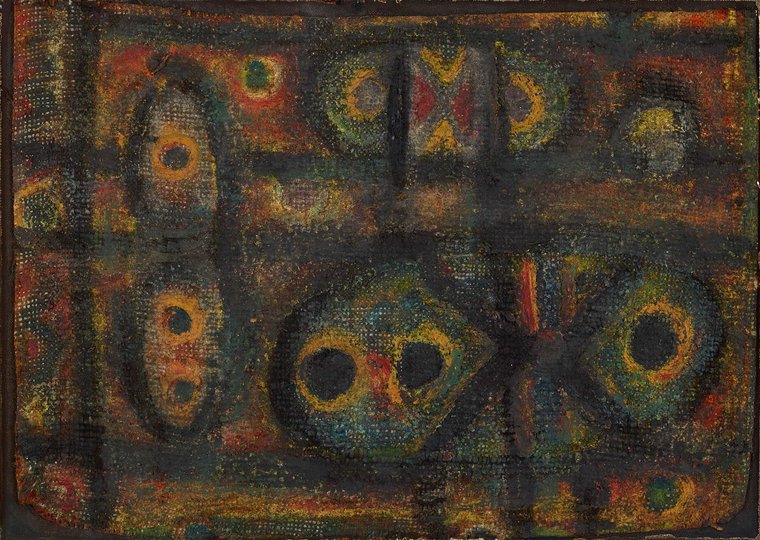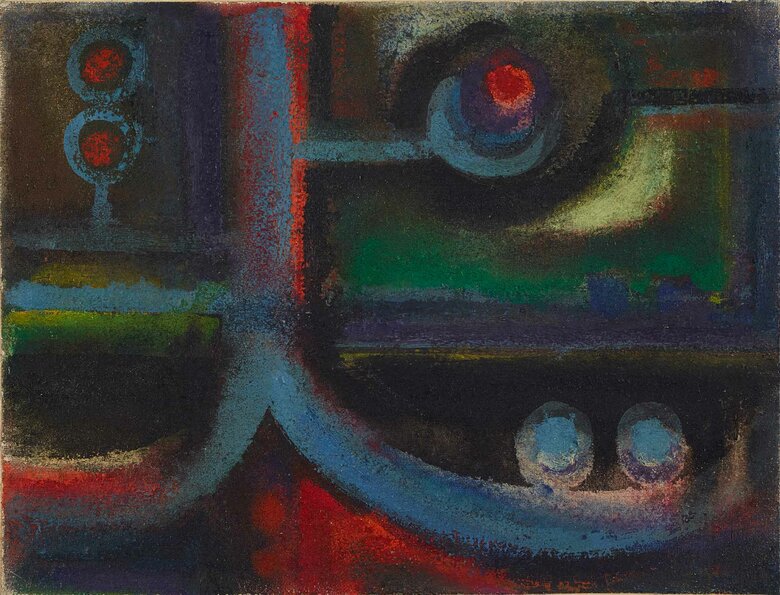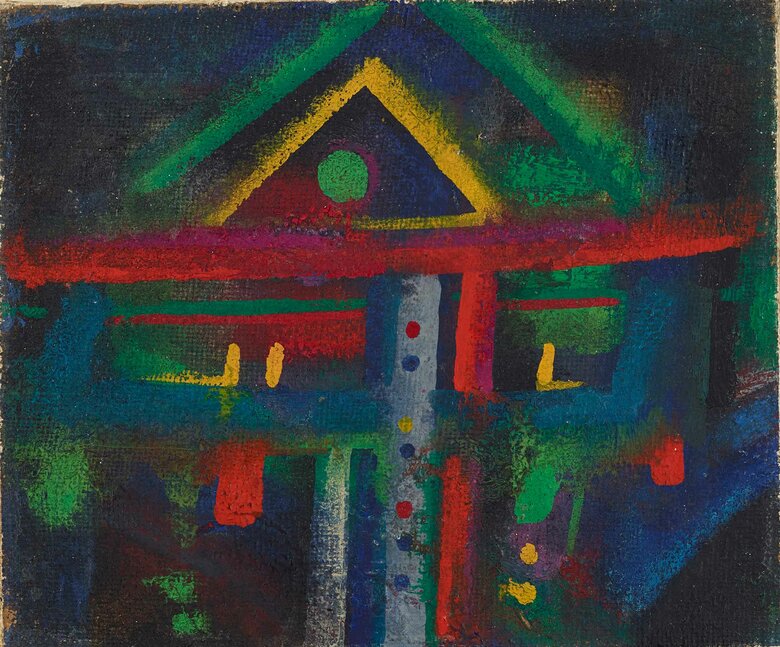Ahmed Cherkaoui's artwork exhibits a masterful oil application on burlap, subsequently mounted on canvas and panel. A luminous tapestry of basic colors covers the coarse woven fibers, as Cherkaoui's careful distribution of geometric shapes and bold dots adds a layer of complexity and intrigue. With deliberate brushstrokes, Cherkaoui applies oil paint onto the textured burlap weave, allowing it to intertwine with the paint’s hues, revealing glimpses of the coarse fabric. This technique adds a tactile quality to the work. Cherkaoui’s abstract painting features an interplay of vertical, horizontal, and V-shaped lines, and semi-circles, juxtaposed with a scattering of black, green, and grey dots that punctuate the composition like rhythmic beats in a melody. The artist's confident use of curved and straight lines traced with a bold, self-assured gesture further articulates the work's structural elements.
The painting’s warm and radiant color palette is what captures the viewer's attention most; it imbues the piece with a sense of serenity and vibrancy at the same time. Cherkaoui employs a range of hues, including brick reds, sunny yellows, emerald greens, and toned blues, all applied with thick, determined brushstrokes that reveal an assertive hand behind the creation. For further emphasis, the artist delineates the abstracted shapes with light ochre yellow and bistre brown contours. The warm and earthy tones of brick red, brown, and mossy green against the golden ochre yellow lend luminosity to the surface, coupled with a darkening depth across the painting’s rectangular composition.
Ahmed Cherkaoui's artwork is a testament to his profound admiration for the vibrant abstract creations of Swiss cubist artist Paul Klee. However, his fascination with his Moroccan heritage inspired him most. Cherkaoui's deep understanding of traditional Moroccan craftsmanshipwashoned by his study of various crafts such as tapestries, rugs, pottery, and the Amazigh tribal tattoos. Furthermore, Cherkaoui incorporates a rich and diverse range of hues reminiscent of Moroccan landscapes. His art reflects a unique blending of traditional Moroccan aesthetics with his style.
It is fair to assume that Cherkaoui’s paternal ties to the ‘Charkawwiya’ Sufi brotherhood community and maternal connection to the Zayanes, a Berber tribe famed for carpet-making, significantly influenced his artistic approach. In Cherkaoui's work, one can discern elements that strikingly resemble the henna tattoos adorning the faces and hands of Berber men and women. Most of those geometrically shaped tattoos are drawn from nature, often associated with status, fertility, magic, and pagan rituals.
In Cherkaoui’s mystic paintings, those signs are not merely replicated but reimagined through the skillful integration of repetitive motifs: semi-circles, triangles, bold lines, and dots. Cherkaoui’s attention to tactility through textured burlap, an earthy colorpalette, and the use of linesand shapeshint at the essential elements of different sign systems, underscoring his adeptintegration of them into his unique artistic language. The modernist artist liberates the signs from their traditional meanings and transforms them into experimental elements of plastic research.
Cherkaoui's oeuvre attests to the critical influence of the diaspora in shaping Morocco's national and cultural identity. His work eloquently underscores the realization that the essence of modern Moroccan art lies in its unique identity. This identity, as reflected in Cherkaoui's artwork, is not a particular note but a rich symphony of cultures and traditions that have endured and evolved over centuries within the country. Through his deft blending of these diverse influences, Cherkaoui illuminates the multifaceted, resilient, and captivating nature of Moroccan identity.










